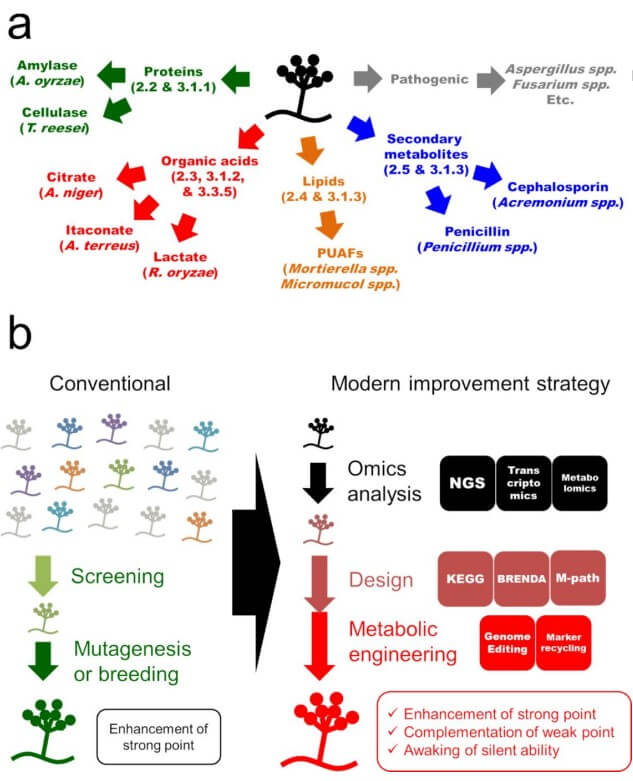Metabolomic Analysis of Fungal Metabolic Engineering
Fungi are one of the main sources for producing beneficial metabolites for humans, such as amino acids, biopharmaceuticals, biofuels, etc. With the rapid development of synthetic biology, fungi have become a widely used biological chassis. Using the natural metabolic pathways of fungi or modifying their metabolic pathways through metabolic engineering techniques to meet production needs has become a hot research topic for biologists. The construction of metabolomics and metabolic networks facilitates the optimization and improvement of fungal metabolic pathways. Compared to transcriptomics and proteomics, metabolomics enables a sharper analysis of the effects of environmental perturbations or stresses on cells. We can use metabolomics to objectively evaluate the accumulation of fungal metabolites and dynamic changes under different conditions.
Lifeasible uses metabolomic approaches to analyze the dynamic patterns of fungal-specific metabolites to provide guidance for the genetic improvement of fungi.
 Figure 1. Fungal application and improvement. (Wakai S, et al., 2017)
Figure 1. Fungal application and improvement. (Wakai S, et al., 2017)
What We Provide
- We can offer a variety of genetic transformation techniques to achieve fungal metabolic engineering modifications. CaCl2 and PEG-mediated protoplast transformation method, Agrobacterium tumefaciens-mediated transformation method, electroporation transformation method, and gene gun method.
- We offer gene knockout technology for fungal genome modification, such as RNA-mediated CRISPR/Cas technology.
- We have CRISPR/Cas-based gene editing technology to provide technical support for fungal metabolic engineering. If you would like more information, please click to jump to the details page.
Featured Services
- High throughput quantitative analysis of metabolites. We use nuclear magnetic resonance and gas chromatography-mass spectrometry to directly analyze metabolite concentrations and grasp the dynamic changes of intracellular metabolism to provide a basis for fungal metabolic engineering modification and optimization.
- Metabolic fluxomics analysis. We use isotope-labeled carbon or nitrogen sources as substrates for strain culture, and we can grasp the dynamic flow of intracellular metabolites by analyzing intracellular isotope-labeled metabolites and integrating the results of metabolic network model calculations.
- Construction of gene-scale metabolic network models. The genome-scale metabolic network model is used as a mathematical model to characterize the relationship between the genome, metabolic reactions, and proteins, laying the foundation for targeted modification of microorganisms. We model the intracellular metabolic reactions using a system of linear equations formed by the stoichiometric equations of the metabolic reaction network to construct a linear programming model based on the rate constraint of metabolic reactions.
Lifeasible is dedicated to the research of fungal metabolic engineering, aiming to improve the understanding of the overall metabolic regulation of fungi and the level of modification using metabolomics technology and to promote the application of fungal generation metabolic engineering in various fields. As your trusted partner, we can meet all your fungal metabolomics analysis needs and provide you with efficient and high-quality services. If you want to know the details, please contact us.
Reference
- Wakai S, et al, Kondo A. Future insights in fungal metabolic engineering. Bioresour Technol. 2017 Dec; 245(Pt B): 1314-1326.
For research or industrial raw materials, not for personal medical use!
 Figure 1. Fungal application and improvement. (Wakai S, et al., 2017)
Figure 1. Fungal application and improvement. (Wakai S, et al., 2017)